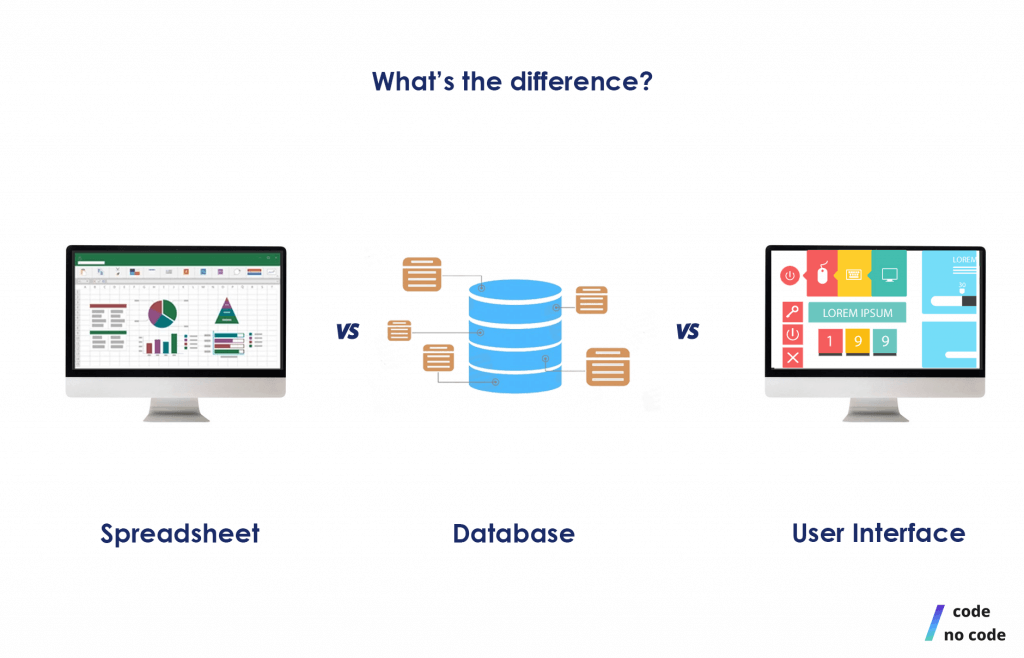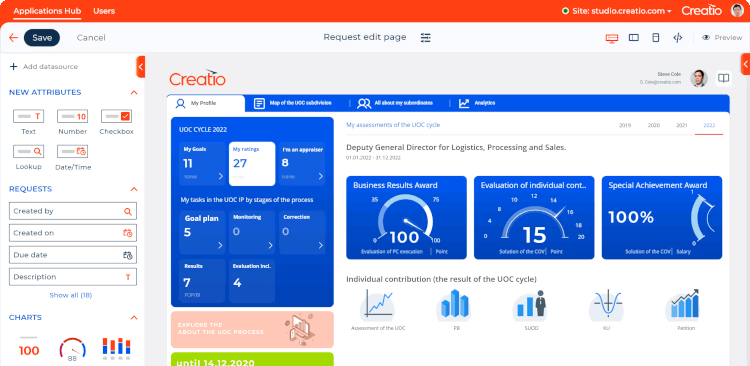Open the Power of No-Code for Open Platform Database Production
Open the Power of No-Code for Open Platform Database Production
Blog Article
A Comprehensive Guide to Implementing Scalable Databases Without the Requirement for Coding Experience
In the contemporary landscape of information management, the capability to carry out scalable databases without coding know-how is coming to be increasingly necessary for organizations of all sizes. This overview aims to brighten the procedure, concentrating on user-friendly tools and intuitive user interfaces that demystify database setup. By checking out essential functions, effective strategies for implementation, and best techniques for ongoing monitoring, we will deal with just how even non-technical individuals can with confidence navigate this complicated terrain. What are the critical aspects that can truly equip these users to take advantage of scalable databases successfully? The answers might redefine your method to data monitoring.
Understanding Scalable Data Sources
In the world of modern data administration, scalable databases have actually emerged as a vital remedy for companies looking for to deal with enhancing volumes of details effectively. These databases are designed to accommodate growth by allowing for the seamless enhancement of sources, whether via horizontal scaling (including much more machines) or vertical scaling (updating existing equipments) This adaptability is important in today's busy digital landscape, where data is created at an unmatched rate.
Scalable databases commonly utilize dispersed designs, which make it possible for information to be spread out across multiple nodes. This circulation not just boosts efficiency however additionally provides redundancy, ensuring data accessibility even in the occasion of hardware failings. Scalability can be a crucial aspect for different applications, including shopping platforms, social media sites networks, and large data analytics, where user demand can rise and fall considerably.
Additionally, scalable data sources often feature robust information uniformity models that balance efficiency and dependability. Organizations should consider their certain requirements, such as read and create rates, data stability, and fault resistance when choosing a scalable data source remedy. Ultimately, recognizing the underlying principles of scalable databases is crucial for services aiming to thrive in a progressively data-driven world.
Trick Functions to Look For
When reviewing scalable data sources, a number of crucial attributes are extremely important to making sure optimal performance and reliability. Think about the architecture of the data source. A dispersed style can improve scalability by enabling data to be kept throughout multiple nodes, facilitating smooth data gain access to and handling as demand increases.
One more important feature is data partitioning, which allows efficient administration of large datasets by dividing them into smaller sized, much more convenient items (no-code). This technique not only boosts efficiency yet additionally simplifies resource allowance
In addition, seek durable duplication abilities. This feature makes sure data redundancy and high availability, decreasing downtime throughout maintenance or unforeseen failures.
Performance surveillance tools are also vital, as they supply real-time understandings into system health and wellness and operational effectiveness, permitting timely adjustments to preserve optimal efficiency.

User-Friendly Data Source Tools
Simpleness is an important component in the style of easy to use data source tools, as it improves access for users with differing degrees of technical experience. no-code. These devices prioritize user-friendly interfaces, allowing customers to develop, handle, and query databases without calling for comprehensive programming understanding
Secret features commonly consist of navigate here drag-and-drop capability, visual data modeling, and pre-built layouts that streamline the configuration procedure. Such tools typically provide led tutorials or onboarding procedures that assist in customer involvement and reduce the discovering curve. Furthermore, smooth assimilation with preferred data resources and services makes certain that customers can conveniently import and export data, additionally streamlining operations.

Furthermore, robust support and area sources, such as online forums and documents, enhance the user experience by giving help when needed. Generally, user-friendly data source devices empower companies to harness the power of scalable databases, making information administration accessible to everybody involved.
Step-by-Step Execution Overview
How can organizations effectively apply scalable data sources to fulfill their expanding data demands? The process starts with recognizing certain information demands, consisting of the quantity, selection, and speed of information that will be processed. Next, organizations need to review user-friendly database tools that use scalability attributes, such as cloud-based services or handled database solutions.
When the ideal device is chosen, the following action includes configuring the database environment. This includes establishing up instances, defining user consents, and developing information frameworks that align with service purposes. Organizations needs to then move existing data right into the brand-new system, making certain data integrity and marginal interruption to operations.
Post-migration, carrying out detailed screening is essential; this consists of efficiency testing under various tons conditions to make sure the visite site system can manage future development - no-code. Additionally, it is very important to educate team on the database management interface to help with smooth use
Finest Practices for Monitoring
Efficient administration of scalable databases requires a strategic approach that focuses on recurring monitoring and optimization. To accomplish this, organizations should execute durable surveillance devices that give real-time understandings into database efficiency metrics, such as query reaction times, resource use, and purchase throughput. Frequently evaluating these metrics can aid determine bottlenecks and areas for improvement.

Routine back-ups and calamity recuperation plans are important to guard information integrity and schedule. Establishing a routine for evaluating these backups will certainly guarantee a trustworthy recovery process in situation of an unexpected failure.
In addition, performance adjusting should be a continuous procedure. Adjusting indexing approaches, enhancing inquiries, and scaling resourcesâEUR" whether up and down or horizontallyâEUR" will certainly help preserve optimal efficiency as use demands advance.
Finally, promoting a society of understanding sharing among employee will make it possible for continual discovering and adjustment, making certain that the management of scalable databases stays effective and reliable over time.
Conclusion
To conclude, the implementation of scalable databases can be successfully achieved without coding knowledge via the application of easy to use devices and intuitive interfaces. By sticking to the laid out methods for setup, information migration, and performance testing, people can browse the complexities of database administration effortlessly. Highlighting finest practices for recurring maintenance and collaboration more boosts the capacity to manage scalable databases effectively in a rapidly evolving data-driven environment.
In the modern landscape of information management, the capability to apply scalable data sources without coding expertise is becoming increasingly vital for organizations of all dimensions.In the realm of modern information management, scalable databases have emerged as a vital option for companies seeking to handle raising volumes of information effectively.In addition, scalable databases often feature robust information consistency designs that stabilize performance and dependability.Just how can companies have a peek at this website effectively execute scalable databases to meet their expanding data requirements? Next off, organizations must assess easy to use data source devices that supply scalability functions, such as cloud-based services or handled database services.
Report this page